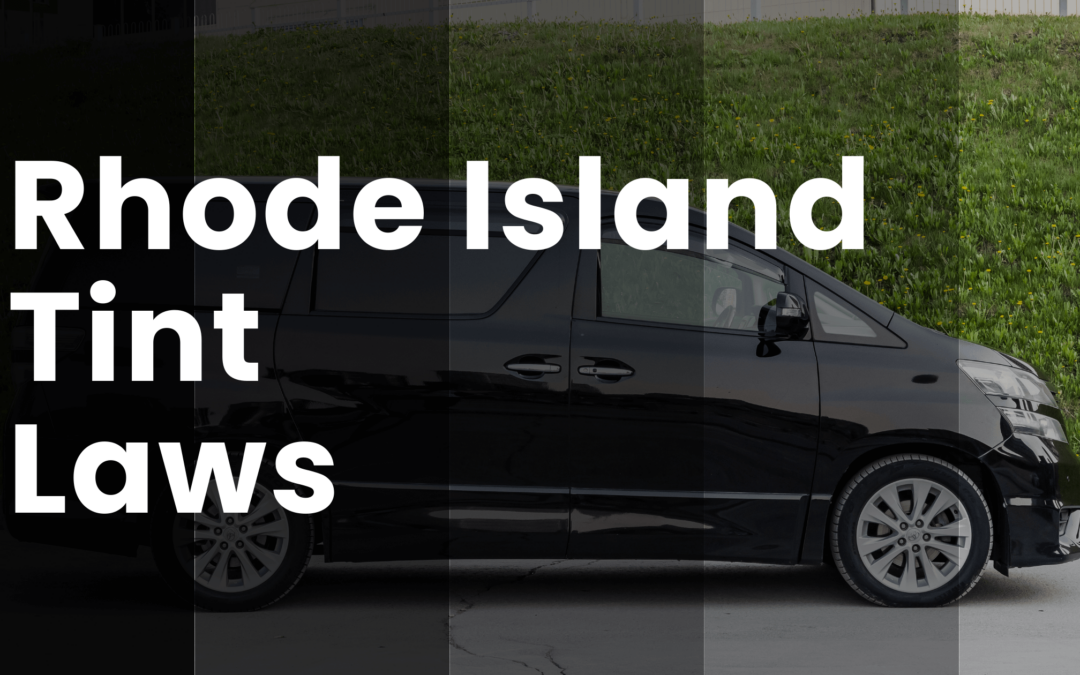Rhode Island Tint Laws
Understanding the nuances of window tinting laws in Rhode Island is pivotal to ensure compliance and avoid potential legal complications. Enacted in 2000, these laws are meticulous in governing the darkness of tints, reflectivity, and other important factors. Below, we provide a comprehensive breakdown of Rhode Island’s car window tinting laws.
Disclaimer
While I have a background in commercial law and strive to provide accurate and informative content, it’s important to note that I am not a legal expert. The information presented in this blog is based on my interpretation of the subject matter, and laws can vary by location and change over time. It is strongly recommended that readers verify all sources of information and consult with legal professionals or relevant authorities before making any decisions related to tint laws.
Understanding the Terminology Regarding Tint Laws
The most important part of the legislation is understanding what VLT is and how law enforcement services check or test the percentage.
What is VLT
VLT, or Visible Light Transmission, is a measure of the amount of visible light that can pass through a window tint or film. It is commonly used to determine the darkness or opacity of window tints, and it’s an important factor in window tinting laws and regulations.
VLT is typically expressed as a percentage. For example, a window tint with a VLT of 20% allows only 20% of visible light to pass through, making it relatively dark and less transparent. Conversely, a window tint with a VLT of 70% allows 70% of visible light to pass through and is much lighter and more transparent.
How do Law Enforcement services test the VLT percentage?
Window tinting laws vary by jurisdiction, and they often specify the maximum allowable VLT for different types of windows on a vehicle, such as the front windshield, front side windows, rear side windows, and rear window. These laws are designed to ensure that drivers have adequate visibility and that law enforcement can see into vehicles for safety and identification purposes. The manner that they go about testing the VLT is by using a VLT gauge/meter.
Here is a YouTube Short from @TrafficServices and @TorontoPolice showcasing the device and how it works. Even though it is in Canada, it still is helpful to understand how the tint darkness is measured.
Window Tint Darkness in Rhode Island:
Rhode Island’s regulations specify the percentage of visible light transmission (VLT) allowed through your car’s windows, with distinct guidelines for sedans and SUVs/vans.
Rhode Island Car Tint Law For Sedans:
- Windshield: Non-reflective tint is permissible above the manufacturer’s AS-1 line.
- Front Side Windows: These windows must allow more than 70% of light in.
- Back Side Windows: Similar to front side windows, the back side windows must permit over 70% VLT.
- Rear Window: Rear windows must also allow more than 70% of light in.
Tint Law For SUVs and Vans in Rhode Island:
- Windshield: Non-reflective tint is allowed above the manufacturer’s AS-1 line.
- Front Side Windows: Front side windows on SUVs and vans should allow more than 70% of light transmission.
- Back Side Windows: While the law does not provide specific restrictions for darkness, it’s recommended to abide by the sedan regulations.
- Rear Window: Similar to back side windows, there are no specific regulations for the rear window of SUVs and vans.
| Type of Window | Sedans | SUVs/Vans |
|---|---|---|
| Windshield | Non-reflective tint above AS-1 line | Non-reflective tint above AS-1 line |
| Front Side Windows | Must allow over 70% of light | Must allow over 70% of light |
| Back Side Windows | Must permit over 70% VLT | Recommended to abide by sedan regulations (Over 70% VLT) |
| Rear Window | Must allow over 70% of light | No specific regulations |
Window Tint Reflection in Rhode Island:
Window tints can reflect incoming light, reducing glare and heat.
Rhode Island’s tint law does not impose specific restrictions on window reflection for sedans or SUVs/vans.
Additional Rhode Island Window Tint Rules and Regulations:
Rhode Island’s window tinting laws encompass various critical regulations:
Side Mirrors
There are no restrictions regarding side mirrors.
Restricted Colors
The state permits all window tint colors.
Certificates
Film manufacturers are not required to certify the film they sell in Rhode Island.
Stickers
Rhode Island does not mandate the use of stickers to identify legal tinting.
Medical Exceptions
Rhode Island allows medical exemptions for special tint, recognizing the necessity of such exemptions for individuals with specific medical conditions.
Regulations for Out-of-State Drivers
The same regulations apply to out-of-state drivers as those for drivers living in the State.
If you are from States such as Massachusetts and Connecticut, you are expected to abide by these laws and regulations.
Penalties
Violations of these tint regulations can result in fines of up to $250 per offense, as specified in § 31-23.3-5.
It’s worth noting that interpretations of Rhode Island’s tinting laws may vary by county or residential area. To ensure full compliance, it is advisable to cross-verify this information with your local Department of Motor Vehicles (DMV) or law enforcement authorities.
Our information regarding Rhode Island’s window tint laws was most recently updated in 2023. We are committed to providing accurate, up-to-date information, and should you come across any inaccuracies or outdated details, please do not hesitate to contact us. Your trust in our resources is invaluable, and we are dedicated to offering the most reliable information available.
Rhode Island Tint Law FAQS
Can you get pulled over for tint in RI?
Yes, you can get pulled over for tint in RI. You may also be fined if your tints aren’t compliant with the State’s laws.
How much is a tint ticket in RI?
A tint ticket can be up to $250 per offense.
Is 30% tint legal in Rhode Island?
No, it is illegal to have any tint darker than 70% VLT.

